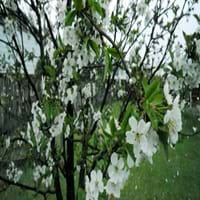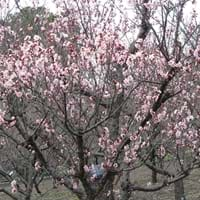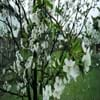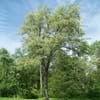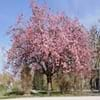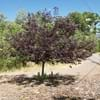Life Span
Perennial
Perennial
Origin
Western Asia
China, Korea
Types
Büttnera Czerwona, Hedelfinger Sweet Cherry
Not Available
Number of Varieties
Not Available
Habitat
Woodland Garden Canopy
All sorts of environments, Fertile bottom land, Well Drained
USDA Hardiness Zone
5-8
6-9
Sunset Zone
2a, 2b, 6, 7, 14, 15
3a, 3b, 4, 5, 6, 7, 8, 9, 12, 13, 14, 15, 16, 17, 18, 19, 20, 21, 22
Habit
Upright/Erect
Oval or Rounded
Flower Color
Not Available
White, Pink, Rose
Flower Color Modifier
Bicolor
Bicolor
Fruit Color
Not Available
Yellow
Leaf Color in Spring
Not Available
Green
Leaf Color in Summer
Not Available
Green
Leaf Color in Fall
Not Available
Yellow, Light Yellow, Yellow green
Leaf Color in Winter
Not Available
Not Available
Leaf Shape
broad, flat
Aristate
Plant Season
Spring, Summer, Fall
Spring, Winter
Sunlight
Full Sun, Partial Sun
Full Sun, Partial Sun
Type of Soil
Clay, Loam, Sand
Clay, Loam
The pH of Soil
Acidic, Neutral
Acidic, Neutral
Soil Drainage
Well drained
Well drained
Bloom Time
Spring
Early Spring, Early Winter, Winter, Late Winter
Tolerances
Not Available
Not Available
Where to Plant?
Ground
Ground
How to Plant?
Semi-hardwood and hardwood cuttings
Budding, Seedlings
Plant Maintenance
Medium
Medium
Watering Requirements
Water 1 in. per week during the active growing period, Water more in summer
Average Water Needs, Does not require lot of watering, Water more frequently during periods of extreme drought
In Summer
Lots of watering
Lots of watering
In Spring
Moderate
Moderate
In Winter
Average Water
Average Water
Soil pH
Acidic, Neutral
Acidic, Neutral
Soil Type
Clay, Loam, Sand
Clay, Loam
Soil Drainage Capacity
Well drained
Well drained
Sun Exposure
Full Sun, Partial Sun
Full Sun, Partial Sun
Pruning
Remove dead branches, Remove thin branches
Remove damaged leaves, Remove dead branches, Remove dead leaves
Fertilizers
A 10 pound bag of 16-4-8 fertilizer
All-Purpose Liquid Fertilizer, Apply N-P-K, fertilize in growing season
Pests and Diseases
Aphids, Borers, Mites
Pests and diseases free, Red blotch
Plant Tolerance
Drought
Drought, Full Sun
Flower Petal Number
Not Available
Single
Foliage Texture
Not Available
Medium
Foliage Sheen
Not Available
Not Available
Attracts
Birds, Flies
Birds
Allergy
Mild Allergen, Vomiting
Not Available
Aesthetic Uses
Beautification, Used in parkland
Not Used For Aesthetic Purpose
Beauty Benefits
Anti-ageing, Good Cleanser, Good for skin, Promotes Healthy Hair
Not Available
Environmental Uses
Air purification
Air purification
Medicinal Uses
Antitussive, Astringent, Diuretic, Tonic
antimicrobial, Gastrointestinal disorders, Ulcers
Part of Plant Used
Fruits, Seeds
Flowers, Fruits
Other Uses
Used for making green dye, Wood is used for making furniture
Sauces, Sometimes used for making wine
Used As Indoor Plant
No
No
Used As Outdoor Plant
Yes
Yes
Garden Design
Edible, Fruit / Fruit Tree, Shade Trees, Topiary / Bonsai / Espalier
Feature Plant, Fruit / Fruit Tree, Shade Trees, Street Trees
Botanical Name
PRUNUS avium
PRUNUS mume
Common Name
Sweet Cherry
Japanese Apricot
In Hindi
मीठी चेरी
जापानी खुबानी
In German
Süße Kirsche
japanische Aprikose
In French
Cerise sucrée
abricot japonais
In Spanish
Cereza dulce
albaricoque japonés
In Greek
γλυκό κεράσι
Ιαπωνικά Βερίκοκο
In Portuguese
Cereja doce
Apricot japonês
In Polish
Słodka Wiśnia
japońska morela
In Latin
dulcis cerasus
Persicum Italica
Phylum
Magnoliophyta
Tracheophyta
Class
Magnoliopsida
Magnoliopsida
Clade
Angiosperms, Eudicots, Rosids
Angiosperms, Eudicots, Rosids
Tribe
Amygdaleae
Not Available
Subfamily
Amygdaloideae
Not Available
Number of Species
Not Available
Not Available
Properties of Sweet Cherry and Japanese Apricot
Wondering what are the properties of Sweet Cherry and Japanese Apricot? We provide you with everything About Sweet Cherry and Japanese Apricot. Sweet Cherry doesn't have thorns and Japanese Apricot doesn't have thorns. Also Sweet Cherry does not have fragrant flowers. Sweet Cherry has allergic reactions like Mild Allergen and Vomiting and Japanese Apricot has allergic reactions like Mild Allergen and Vomiting. Compare all the properties and characteristics of these two plants. Find out which of these plant can be used as indoor plant. If you are interested to decorate your house and garden, find out aesthetic uses, compare them and select the plant which will beautify your surrounding. Along with beautification, try comparing medicinal and edible uses of Sweet Cherry and Japanese Apricot and you can choose the plant having best and most benefits.
Season and Care of Sweet Cherry and Japanese Apricot
Season and care of Sweet Cherry and Japanese Apricot is important to know. While considering everything about Sweet Cherry and Japanese Apricot Care, growing season is an essential factor. Sweet Cherry season is Spring, Summer and Fall and Japanese Apricot season is Spring, Summer and Fall. The type of soil for Sweet Cherry is Clay, Loam, Sand and for Japanese Apricot is Clay, Loam while the PH of soil for Sweet Cherry is Acidic, Neutral and for Japanese Apricot is Acidic, Neutral.
Sweet Cherry and Japanese Apricot Physical Information
Sweet Cherry and Japanese Apricot physical information is very important for comparison. Sweet Cherry height is 910.00 cm and width 760.00 cm whereas Japanese Apricot height is 550.00 cm and width 550.00 cm. The color specification of Sweet Cherry and Japanese Apricot are as follows:
Sweet Cherry flower color: Not Available
Sweet Cherry leaf color: Not Available
Japanese Apricot flower color: White, Pink and Rose
- Japanese Apricot leaf color: Green
Care of Sweet Cherry and Japanese Apricot
Care of Sweet Cherry and Japanese Apricot include pruning, fertilizers, watering etc. Sweet Cherry pruning is done Remove dead branches and Remove thin branches and Japanese Apricot pruning is done Remove damaged leaves, Remove dead branches and Remove dead leaves. In summer Sweet Cherry needs Lots of watering and in winter, it needs Average Water. Whereas, in summer Japanese Apricot needs Lots of watering and in winter, it needs Average Water.
